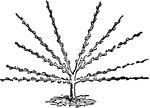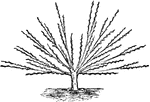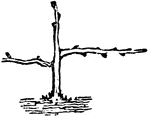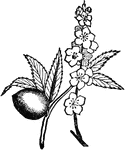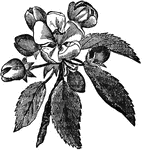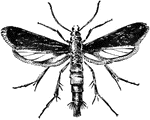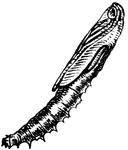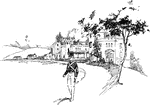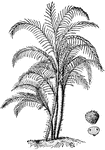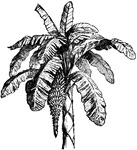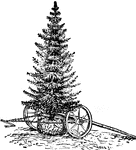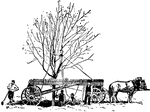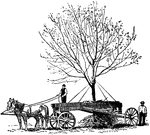
Dwarf-Tree Pruning
"This image gives a good idea of how these drawf trees are to be manipulated, a showing the first year's…

Pyramid Pruning
"a shows a young tree with its second year's growth, the upright shoot of the maiden tree having been…
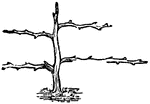
Horizontal Shaped Pruning
"Pruning for Horizontally-Trained Tree, Third Year." — Encyclopedia Britannica, 1893
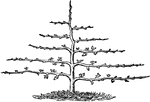
Horizontal Shaped Pruning
"Pruning for Horizontally-Trained Tree, Fifth Year." — Encyclopedia Britannica, 1893
Pruning
"The nature of the cut itself in pruning is of more consequence, especially in the case of fruit trees,…

Pruning
"The nature of the cut itself in pruning is of more consequence, especially in the case of fruit trees,…
Pruning
"The nature of the cut itself in pruning is of more consequence, especially in the case of fruit trees,…
Pruning
"The nature of the cut itself in pruning is of more consequence, especially in the case of fruit trees,…
Pruning
"The nature of the cut itself in pruning is of more consequence, especially in the case of fruit trees,…
Pruning
"The nature of the cut itself in pruning is of more consequence, especially in the case of fruit trees,…

Summer Pruning
"Summer Pruning should be performed while the shoots are yet young and succulent, so that they may be…
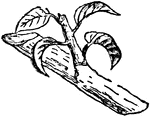
Summer Pruning
"Summer Pruning should be performed while the shoots are yet young and succulent, so that they may be…

Pelargoniums
"Some plants, like pelargoniums, can only be kept handsomely formed and well furnished by cutting them…

Dumontier's Fan
"The form of Dumoutier is merely a refinement on the Montreuil method. The formation of the tree commences…
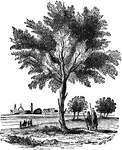
Almond Tree
"A genus of the natural orer Rosaceae, sub-order Amygdaleae or Drupaceae, consisting of trees or shrubs,…

Arbor Vitae
"A genus of plants of the natural order Coniferae, allied to the cypress, and consisting of evergreen…
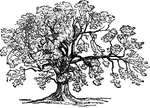
Common Ash
"A genus of trees belonging to the natural order Oleaceae, and distinguished by very imperfect flowers,…
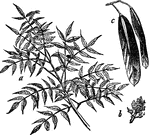
Common Ash
"Common Ash. a, a branch with leaves; b, flowers; c, fruit (on a considerably larger scale than the…
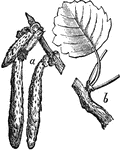
Aspen
"A tree which grows plentifully in Europe and in Siberia. It is a native of Britain, and is frequent…

Astrocaryum
"A genus of Palms, of which about sixeen species are known, natives of tropical America, remarkable…
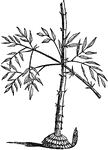
Bamboo
"A genus of grasses, of which most of the species attain a great size, many of them 20 or 30 feet, some…
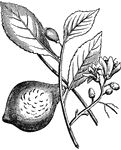
Citron
"A tree cultivated in the south of Europe, and other warm, temperate, or sub-tropical countries for…
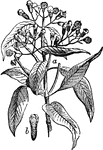
Cloves
"Cloves are the flower-buds of the Clove-tree. The genus to which this tree belongs is of the natural…
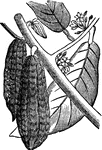
Cocao
"The different kinds of cocoa either consist of, or are prepared from, the seeds of trees of the genus…
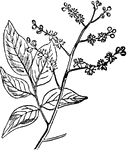
Copaiva Tree
"A valuable medicinal substance, consisting chiefly of a resin (Resin of Copaiva) and a volatile oil…
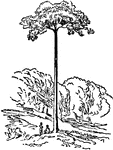
Cow Tree
"A name given to a number of species of tree of different natural orders, the bland milky juice of which…

Cow Tree
"A name given to a number of species of tree of different natural orders, the bland milky juice of which…

Custard Apple
"The name commonly given in the West Indies and other tropical countries to the fruits of certain species…

Date Palm
"A genus of palms, the most important species of which is the common Date Palm, the Palm Tree of Scripture,…

Dragon Tree
"A tree of the natural order Liliaceae, remarkable for the size which it sometimes attains, rivalling…
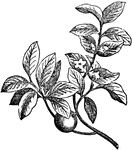
Ebony
"A wood remarkable for its hardness, heaviness, and deep black color, is the heart-wood of different…
Convex Lens
"A modification of the simple kaleidoscope was introduced by Sir David Brewster, whereby the images…
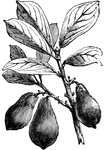
Avocado
A tree native to Central America and Mexico. Ranges from 1 to 2 pounds in weights and is mostly purple…
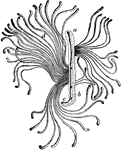
Spruce Beetle
"Galleries of the spruce-destroying beetle beneath the bark of a spruce tree." —Davison, 1906

